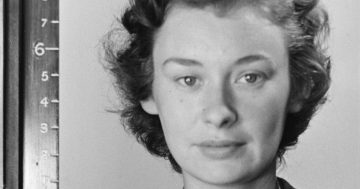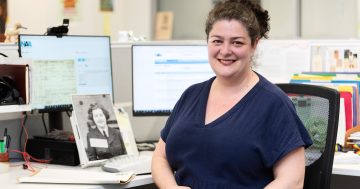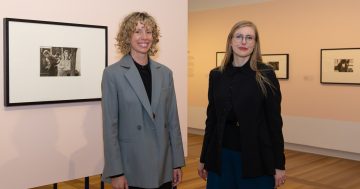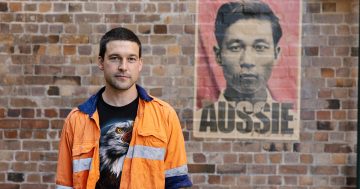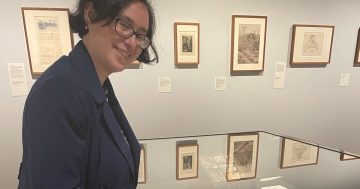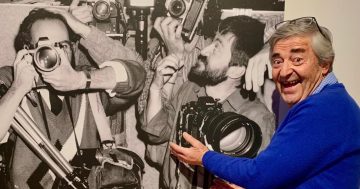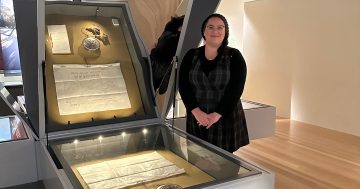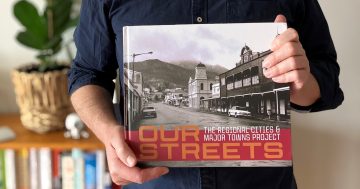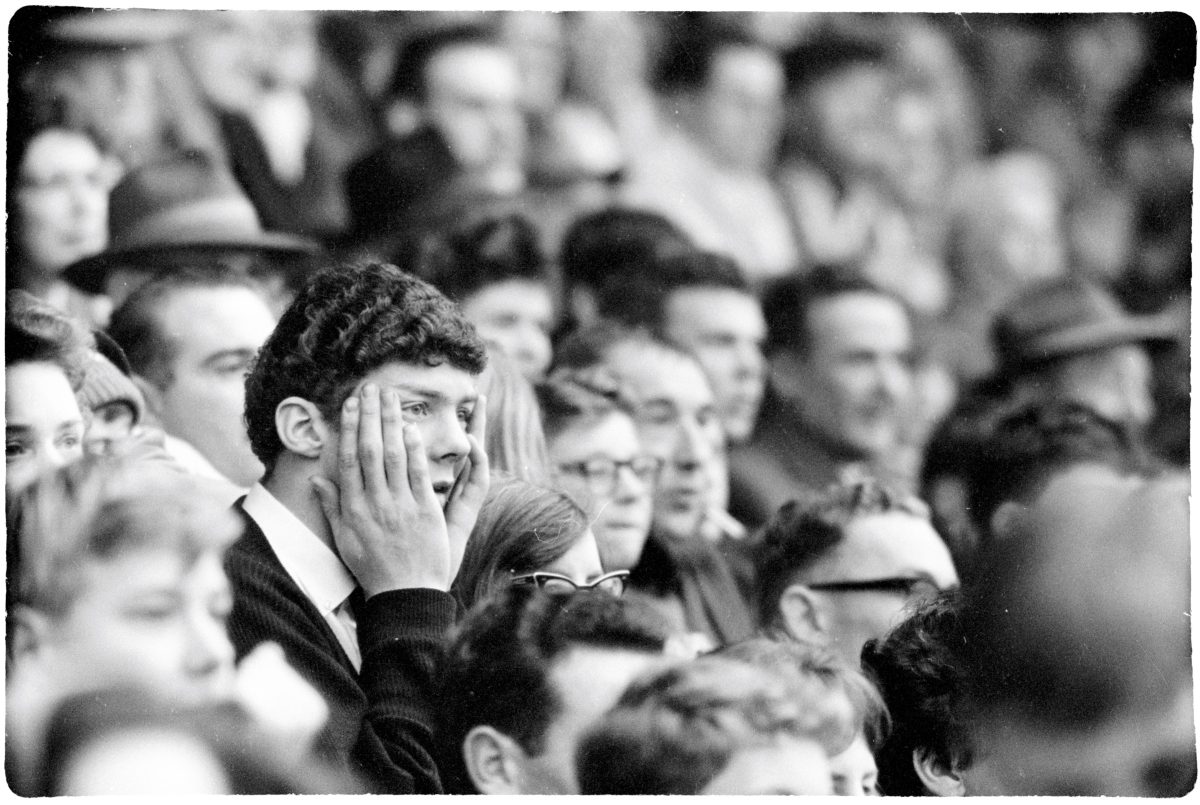
Every sports fan knows the feeling. Government photographer Keith Byron captured this sports fan in 1963. Photo: NAA collection.
It was like magic in those days before digital photography.
Photographers would lock themselves in the darkroom with their rolls of film. They’d fill the sink with chemicals; no light would be allowed in, except for a red glow. Only flies on the wall would see the photographer in action developing the film, sometimes looking like they were conducting an orchestra with hands flapping about – which was how they would control the photograph’s exposure, letting light in or out. The blank piece of glossy paper in the mixing tray would slowly morph into the image the photographer shot earlier – a moment in Australian time.
In its latest exhibition, Focus: Australian Government Photographers, the National Archives of Australia (NAA) has not only brought this bespoke method of photography back to life – albeit through modern digital imagery with an immersive display – it is also shining a light on our country’s first news gatherers, reporters and men (and occasionally women) of the hour – the government photographers.
Between 1939 and 1997, dozens of these photographers were sent out across the country to capture Australia on film.
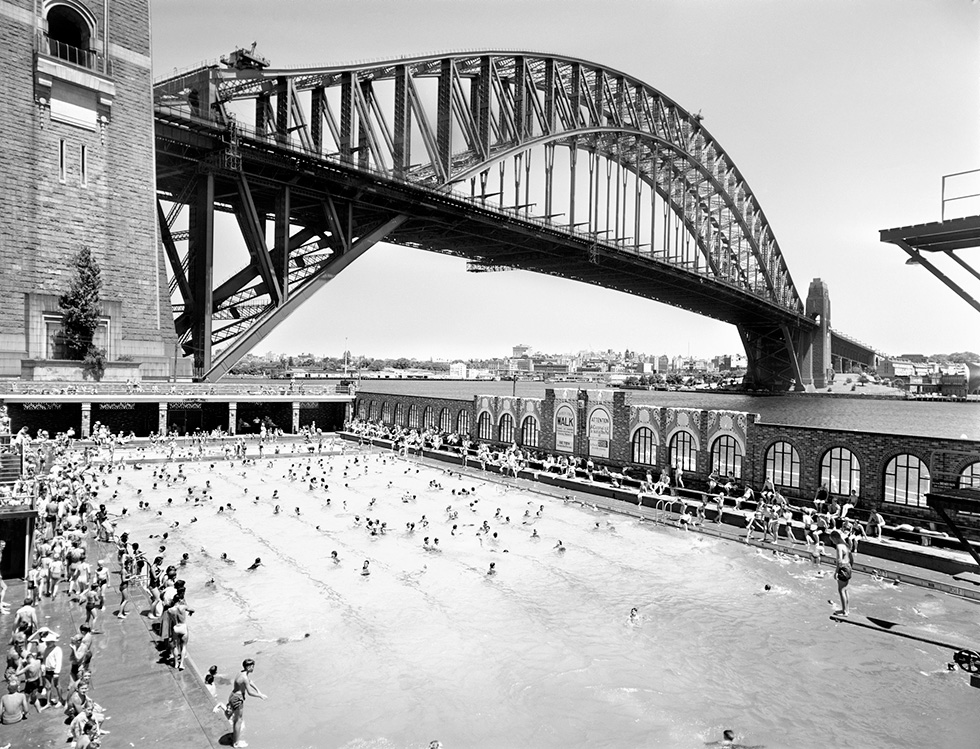
Jim Fitzpatrick’s quintessentially Australian image of a hot 1956 summer’s day in Sydney – at North Sydney Pool. Photo: NAA collection.
Yes, these skilled craftspeople were dispatched to cover history-making events of the time, but it wasn’t all ribbon-cutting ceremonies and smiling politicians.
They, more importantly, according to exhibition curator Emily Catt, told our stories. Being on the spot, they captured our social history like few others.
Ms Catt said with more than 10 million photographs in the NAA collection, one of the hardest tasks in curating the exhibition was selecting which 200 would fit in the exhibition space.
These government photographers were public servants. They worked for the Department of Information, the Australian News and Information Bureau and the Australian Information Service.
“These days, we just Google something if we need information on it; back then, these departments were contacted by people from all over the world – they might have wanted pictures for anything from brochures to school projects.”
She said the photographers included in the exhibition were selected based on their skills and specific areas of expertise. Mervyn Bishop, for example, was the first Indigenous Australian in the job who later became a professional press photographer.
“He worked for the Department of Aboriginal Affairs in the 1970s and his images took the First Nations perspective – the first photographer to do so.”
She said Mr Bishop was also always keen on community consultation when it came to taking his pictures.
“That didn’t always sit well with his managers because they often wanted the photographer to just go in and out and get the photographs.”
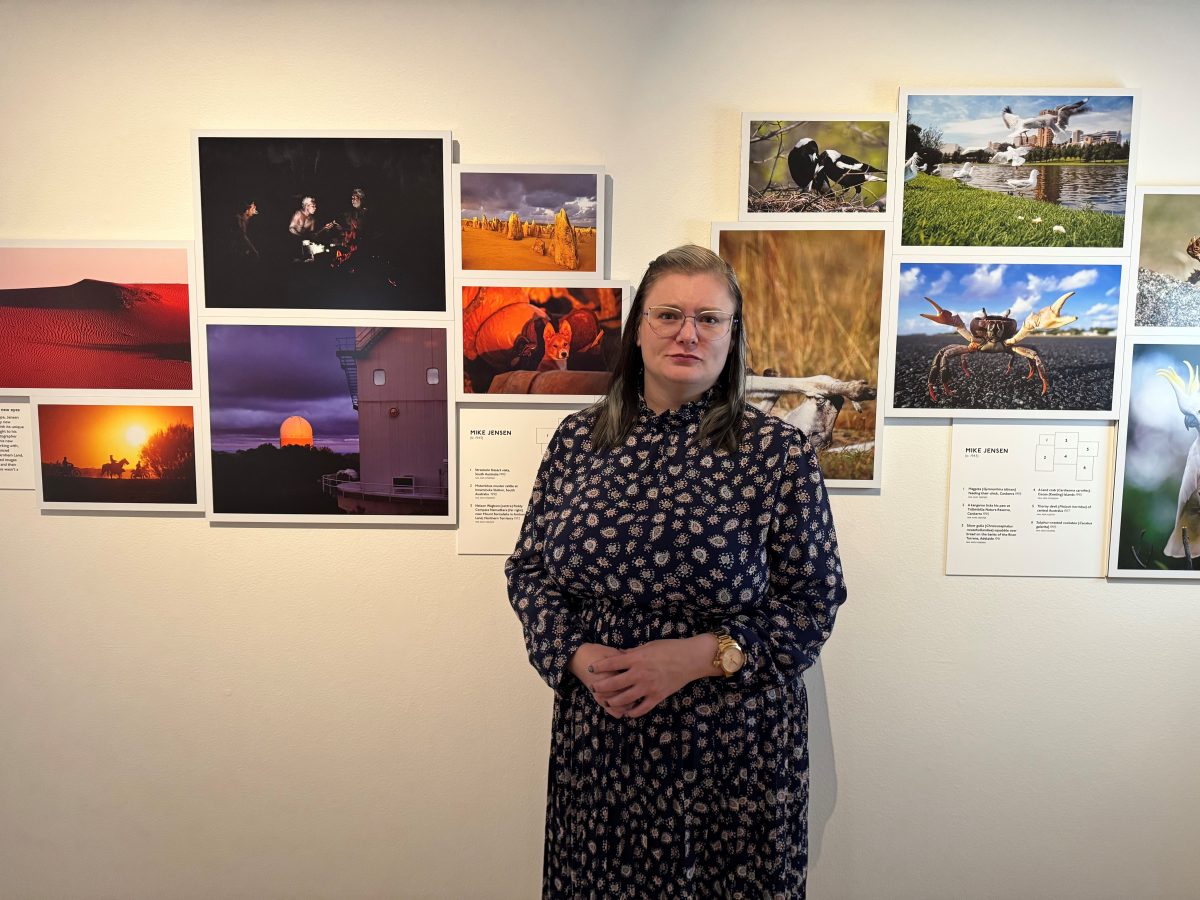
National Archives of Australia curator Emily Catt was charged with selecting 200 images from a collection of millions for the new exhibition Focus: Australian Government Photographers. Photo: NAA.
“Then there’s Neil Murray, who took amazing pictures of the built environment, and Keith Byron, who was known for capturing facial expressions so well. One of his is of a sports fan with his hands on his cheeks looking horrified. Every sports fan knows that moment,” she said.
The work of Jocelyn Burt is also showcased in the exhibition, one of few women employed as a government photographer. Originally trained as a nurse, Ms Catt said she spent much of her time travelling to rural areas where she also wrote stories about what she saw – the two skills helping her make a living.
“It was hard for women then – they faced enormous struggle,” Ms Catt said.
“Some of her male colleagues laughed at her, but the only way she could survive was to sell stories with her photographs.”
But Ms Catt said the work that stayed with her most in the exhibition was that of Barry Le Lievre, who was stationed in Darwin when Cyclone Tracey hit in December 1974.
“He was there with his family. After the cyclone hit, and he made sure his family was safe, he went out to capture the important moment in our history. It must have been so traumatic for him to go out the next day – but this is the sort of magic moment we wanted to capture in the exhibition.”
Ms Catt said one of her aims with the exhibition was to shift the focus back onto the photographers, who were always behind rather than in front of the lens.
“The ones I spoke to were very humble. They just said that they were doing their job. But they did so much more than that.”
Focus: Australian Government Photographers is now open at the National Archives of Australia. It runs until 10 June 2024. Free admission, open daily.












